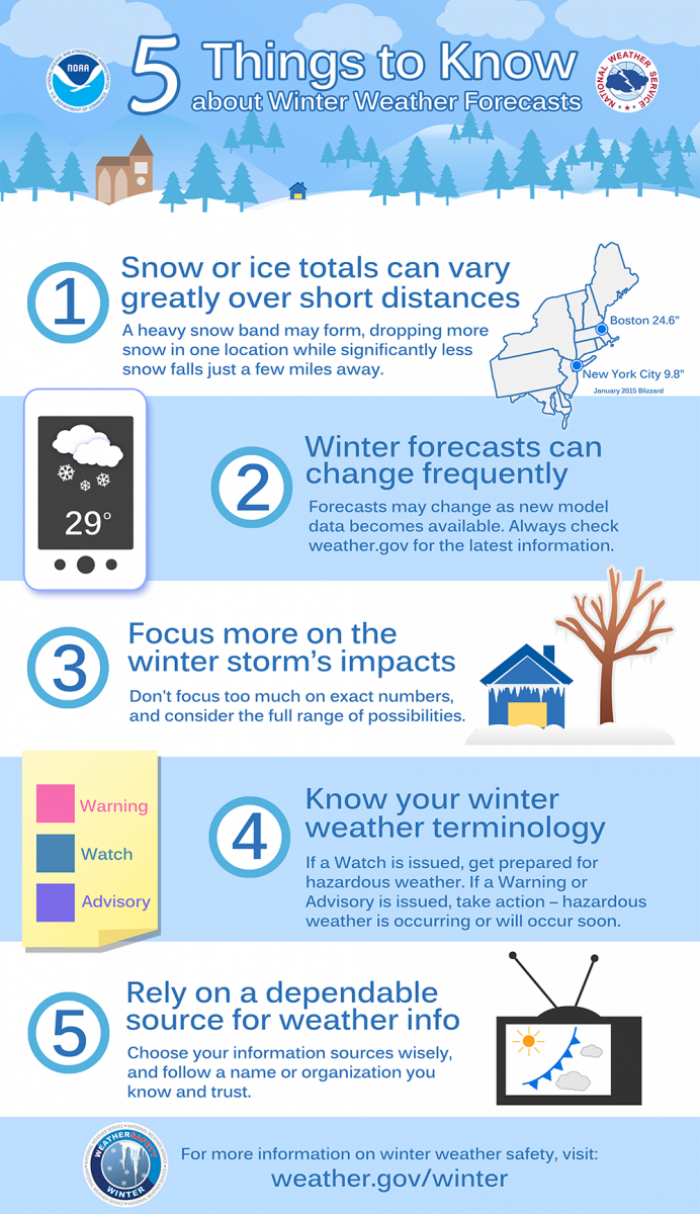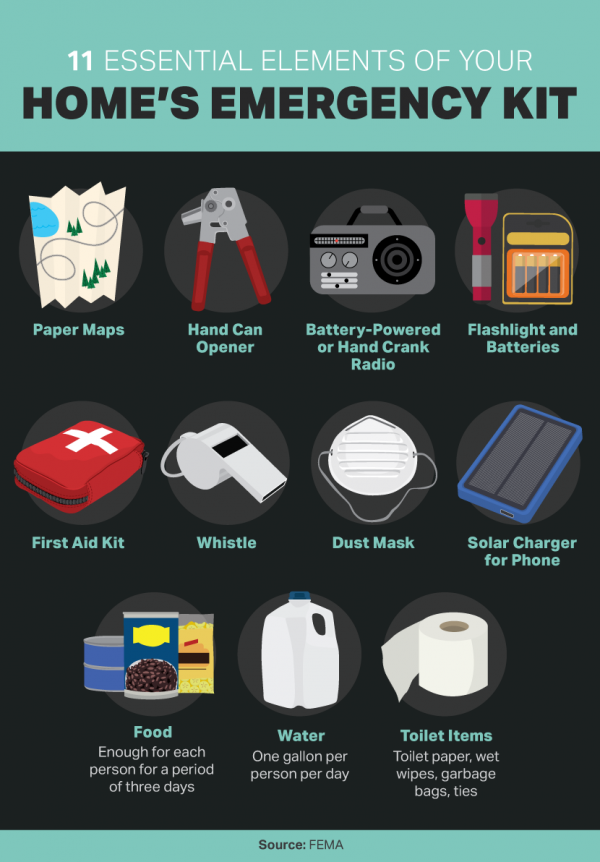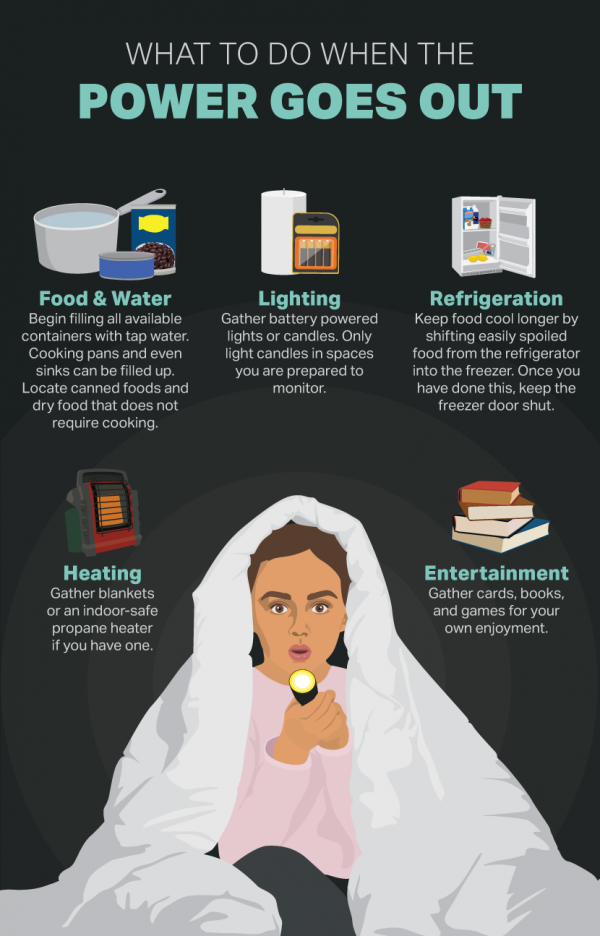If you are experiencing a power outage, please call our office at 620-227-2139 or 800-279-7915. Thank you!
Winter Forecast Challenges

Home Emergency Kit

What to Do When the Power Goes Out

Stay away from downed power lines
In a winter storm emergency, Victory Electric utility crews work around the clock to restore service. Even so, it can take days to repair the devastating damage of a winter storm. If you are in the midst of storm recovery, avoid going outside if possible. Downed power lines could be submerged in snow and ice and difficult to identify. When outside, treat all downed and hanging lines as if they are energized electric lines: Stay away, warn others to stay away and immediately contact Victory Electric. Remember that downed power lines do NOT have to be arcing, sparking or moving to be live and deadly.
Prepare A Winter Survival Kit
Severe winter storms often bring heavy accumulation of ice and snow, which can lead to downed power lines and extended outages. Victory Electric crews will work hard to restore power, but having a winter survival kit on hand is a smart idea.
- Food: Store food that does not require cooking, such as canned goods, crackers, dehydrated meats and dried fruit. Keep a large supply of water on hand. Ready.gov recommends three to five gallons per person per day.
- Medication: Be sure to maintain adequate supplies of prescription medicine in the event of a major winter storm or extended power outage.
- Identification: Keep all forms of identification handy, such as driver’s licenses, photo IDs and social security cards. Bank account information and insurance policies are also good to have on hand.
- Other items: First Aid Kit, blankets, flashlight, battery-powered radio and extra batteries.
Prepare Now
- Know your area’s risk for winter storms. Extreme winter weather can leave communities without utilities or other services for long periods of time.
- Prepare your home to keep out the cold with insulation, caulking, and weather stripping. Learn how to keep pipes from freezing. Install and test smoke alarms and carbon monoxide detectors with battery backups.
- Pay attention to weather reports and warnings of freezing weather and winter storms. Sign up for your community’s warning system. The Emergency Alert System (EAS) and National Oceanic and Atmospheric Administration (NOAA) Weather Radio also provide emergency alerts.
- Gather supplies in case you need to stay home for several days without power. Keep in mind each person’s specific needs, including medication. Do not forget the needs of pets. Have extra batteries for radios and flashlights.
- Create an emergency supply kit for your car. Include jumper cables, sand, a flashlight, warm clothes, blankets, bottled water, and non-perishable snacks. Keep the gas tank full.
- Learn the signs of, and basic treatments for, frostbite and hypothermia.
Survive During
- Stay off roads if at all possible. If trapped in your car, then stay inside.
- Limit your time outside. If you need to go outside, then wear layers of warm clothing.
- Avoid carbon monoxide poisoning. Only use generators and grills outdoors and away from windows. Never heat your home with a gas stovetop or oven.
- Reduce the risk of a heart attack. Avoid overexertion when shoveling snow.
- Watch for signs of frostbite and hypothermia and begin treatment right away.
- Check on neighbors. Older adults and young children are more at risk in extreme cold.
Recognize and Respond
Frostbite causes loss of feeling and color around the face, fingers, and toes.
- Signs: Numbness, white or grayish-yellow skin, firm or waxy skin
- Actions: Go to a warm room. Soak in warm water. Use body heat to warm. Do not massage or use a heating pad.
Hypothermia is an unusually low body temperature. A temperature below 95 degrees is an emergency.
- Signs: Shivering, exhaustion, confusion, fumbling hands, memory loss, slurred speech, or drowsiness
- Actions: Go to a warm room. Warm the center of the body first—chest, neck, head, and groin. Keep dry and wrapped up in warm blankets, including the head and neck.
Stay Warm and Safe
Have a plan for an alternate home heating source in case of an extended outage. Some people use a fireplace, propane space heater or wood-burning stove. Fuel and wood-burning heating sources should always be vented, and make sure carbon monoxide and smoke detectors are working properly. Always practice extreme caution when using alternate heating sources.
If you decide to use a portable generator during an outage, make sure it is placed outside the home for proper ventilation. Do not to overload the generator. Use appropriate extension cords that can handle the electric load. Never connect a portable generator to your homes electrical system without a permanently installed transfer switch.
Follow these tips, and your family will stay warm in the event of a power outage. For more information on preparing for winter storms, visit ready.gov or for more information on winter storm preparedness, visit safeelectricity.org.
